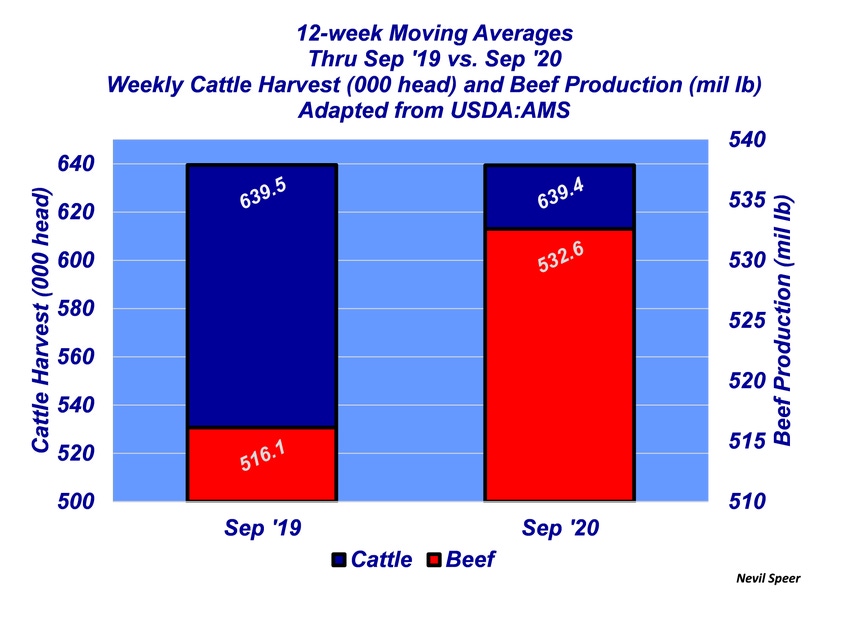Consumer demand and beef industry resilience has been the key in working through the COVID-related challenges in 2020.
October 8, 2020

Over the past few months, this column has been acutely focused on the influence of COVID-19. Perhaps the most significant development during the time frame has been beef’s resilience in the marketplace despite the food service industry lagging far behind pre-COVID activity.
For example:
Meanwhile, looking at the production side provides an even greater appreciation of the significance of these trends.
The COVID slowdown generally meant more days on feed for the feeding sector. That subsequently led to bigger carcass weights. The year-over-year difference peaked at 52 pounds in late May and early June. Carcass weights have since moderated but the industry is still grappling with those added pounds.
This week’s illustration highlights that impact. It features year-over-year comparison of 12-week moving averages through September for both cattle harvest and beef production. Weekly slaughter has been full pace compared to last year. And remember: At this time last year, even though Tyson’s Holcomb plant was off-line, the industry managed to maintain full throughput.
And so, while moderating, steer carcass weights during the last 12 weeks are still running 32 pounds ahead of last year’s average (907 pounds vs 875 pounds, respectively). That difference is the primary contributor to extra weekly beef production.
Looking at it from a different perspective: Consider that during the last 12 weeks, the fed slaughter harvest has averaged roughly 515,000 head per week. Carcasses weighing 32 pounds heavier than last year is the equivalent of adding roughly 19,000 head of fed cattle to the weekly slaughter mix, compared with last year’s 875-pound carcass weight average!
With that in mind, throughput in recent months has been sizeable – and underscores the significance of the trends in the beef market previously mentioned.
Coming full circle, retail beef demand has been remarkable – and facilitated solid resilience for the industry in lieu of support from foodservice. As noted last week, the industry’s work during the past 20 years in terms of Beef Checkoff investment focusing on research and promotion, coupled with huge advances in beef quality and consistency, is paying important dividends.
The industry’s focus on the consumer has been, and is, all-important – proving to be the difference maker through all the noise and challenges stemming from COVID.
Nevil Speer is based in Bowling Green, Ky. and serves as director of industry relations for Where Food Comes From (WFCF). The views and opinions expressed herein do not necessarily reflect those of WFCF or
About the Author(s)
You May Also Like





